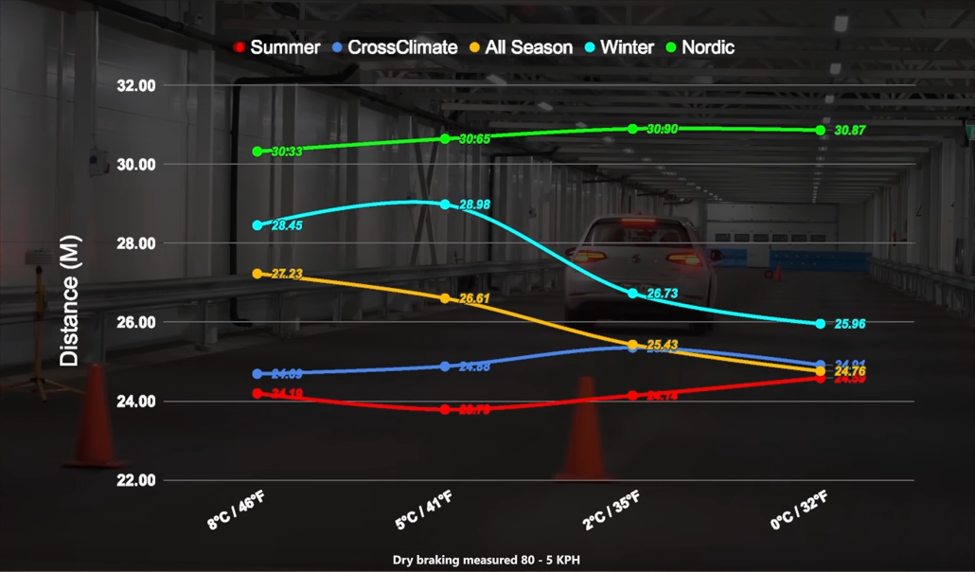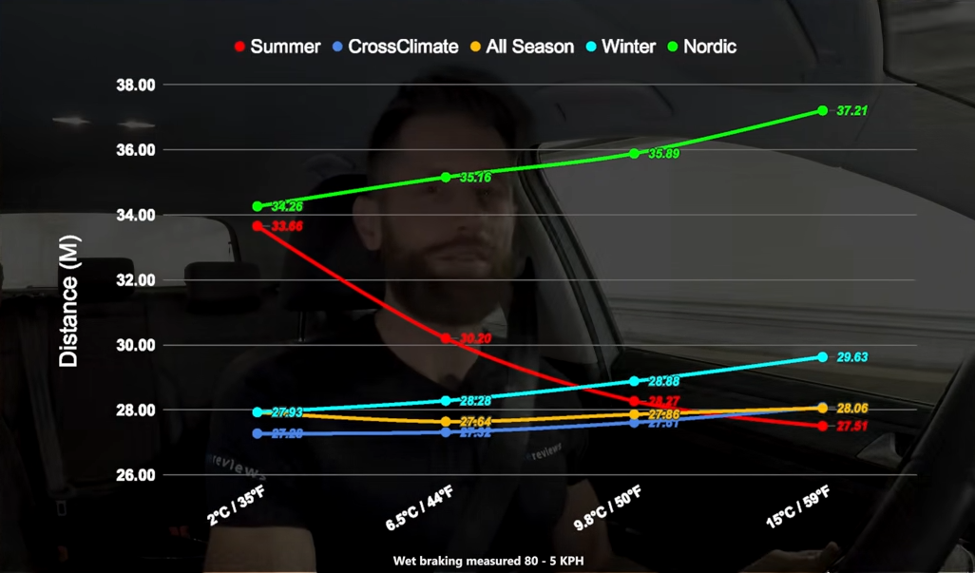With the recent heavy snowfall in the normally temperate Lower Mainland, the subject of mandatory winter tires made the news.
Unfortunately (as is so often the case) media coverage has been high on emotion and opinion, while falling short on facts.
When SENSE BC is asked by media for a comment or a position on traffic enforcement or driving related matters, we consider:
- Whether the consideration is based on objective data
- Whether there is a predictable safety benefit to what is being proposed
- Is the position being proposed by SENSE BC supportable
- Is the position being offered by SENSE BC consistent with Our Mission
Although we often walk away from offering comments which may deviate from the mission as others see it, this time there was little question what the position should be.
First, what is a “winter” tire? Few have tried to explain this and it sure seemed like most reporters didn’t even know there is ambiguity.
If you go into a tire shop, you’re commonly presented with three options for tires: summer, all season, and winter.
Under the BC Motor Vehicle Act Regulations, a “winter” tire is EITHER marked with the 3-peaked mountain and snowflake symbol (commonly referred to as a “winter” tire), OR marked M+S (commonly referred to as an “all season” tire). So, the BC law currently considers either marked “all season” and “winter” tires as “winter” tires.
Confused yet?
BC Motor Vehicle Act Regulations – Section 7
7.162 (3) A winter tire under section 208 of the Act must be labelled on a sidewall by the manufacturer with either of the following:
(a) the 3-peaked mountain and snowflake symbol as shown below:
(b) the letters “M” and “S”.
The question becomes: Is the objective to…
- prohibit summer tires during the winter? (Thus allowing “M+S all season” and “winter” tires, but not “summer” tires.)
- or, to allow ONLY 3-peaked mountain and snowflake symbol “winter” tires during the winter months? (Thus prohibiting “summer” and “M+S all season” tires.)
Option 1 – Absolutely makes sense. And SENSE BC is not advocating that people should be driving summer tires during winter months.
Option 2 – Not so much – especially in the Lower Mainland.
Why not option 2?
This video by Tyre Reviews does some excellent testing, but the short answer is: because in the ~90-95% of winter weather days that the Lower Mainland has (wet or dry, but above zero) the all season tires out-perform winter tires, in some cases substantially.
In legislating mandatory winter snow tires, we’d be trading away better tire safety for the majority of the time to accommodate those rare days where there is snow and extreme weather.
Add the substantial cost of having a second set of tires, the environmental cost of two sets of tires, the environmental cost of the short lifespan of winter tires (used in summer by people who can’t afford two sets), the likelihood of high non-compliance, and the risk of losing insurance coverage for a technical violation. The list goes on.
Chart below: Wet braking, above zero: winter tires are marginally worse than all season (lower is better in these charts).
Chart below: Dry braking, above zero: winter tires are substantially worse than all season.

A decision to legislate winter tires for ALL of BC would make no SENSE and because of that, we took a position on it which you heard last week.
In conclusion: a “winter” tire under BC law is either an “M+S all season” or a “Mountain-Snowflake winter” tire – but to many a “winter” tire is the latter. Making the “Mountain-Snowflake winter” mandatory in a mild-climate winter like the Lower Mainland will not improve safety except on a handful of days. On days above zero – most of the Vancouver winter – those tires can make our roads less safe.
Prohibiting summer tires during winter months does make sense. But that isn’t what was being advocated by the media because they made no attempt to distinguish between “summer”, “all season”, and “winter” tires and did not educate their readers which one(s) they are advocating for.
Ultimately the core issue is the driver: you can have the best tires in the world but an inexperienced or reckless driver will push them past their capabilities. The answer lies in better driver education and simply demanding our drivers be competent (Periodic testing to weed out incompetence – ICBC? Anyone listening? A 10-minute computer simulator test at every 5-year licence renewal could do wonders to deny renewals for our incompetent drivers and help reduce the astronomical insurance costs we all bear.)
The BC government later issued a statement reported by CTV News: “at this time there are no plans to expand rules for mandatory tires.” “Currently, winter tires are not mandatory province-wide in B.C. due to its varied weather,” ministry communications staff wrote. “Sixty per cent of all B.C. motorists drive in parts of the province where snow conditions are not common.”
More videos and tire testing on the Tyre Reviews channel.

IMO the obligation should be whenever and wherever there is snow on the road, not arbitrary dates. This is where the performance of summer tires completely fall apart and becomes dangerous.
In my area (Victoria) we experience snow on the road maybe 1 week/year but we always see morons trying to drive on half an inch of snow with inadequate tires. They’re swerving all over the place on the highway at 20 km/h with their hazards on and can’t even go up the slightest incline without getting stuck. Then at the end of the day you see their cars in ditches all over the city. These people are public hazards.
Coming from someone who spent most of his life where there snow on the road is a normal thing for half of the year, this is downright painful to watch.
If you don’t have adequate tires for when there is snow on the road, DON’T DRIVE. Tough luck if you weren’t ready for it, it’s your own fault.
What is your source for the graphs? When and where were the tests done? Which tires were used? Last week the lower mainland temps were below 0C but there are no graphs depicting performance for sub zero temps for dry or snow/ice(wet). There is a wide range of winter tires on the market. Some perform better than others. In the winter months I have to believe that a winter tire will always perform better than any all season tire in the rain and the lower mainland gets more rain than snow/ice or dry days through the winter. All tire manufacturers suggest that any winter tire will outperform allseason tires at +7C or less.
The graphs are from the linked video: https://www.youtube.com/watch?v=bKtnczk8Mxk
The video answers most of your questions about the testing.
I think snow tires should be mandatory every where..during winter season..
Mike: you missed the point, nowhere did they mention snow tires. The term is “winter tires” and they should be mandatory outside the lower mainland. if you drive to the interior or Whistler Winter Tires (mountain snow flake) should be mandatory M+S all-season are NOT adequate. Winter tires save money, they make your summer tires last twice as long and one accident avoided more than pays for them.